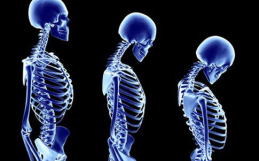I came across the Stand Up Kids website when I became acutely aware of the impact that sitting was having on the majority of patients I was seeing in the office. Along with my continuous theme of health and longevity, I am a firm believer that it is much easier to keep someone healthy for the rest of their lives, than to ‘fix’ someone that is ‘broken’.
I have often talked about how the easiest and most impactful demographic to address would be kids (see other blogs: Why Should Kids See a Chiropractor, Should Kids Wear Shoes or Be Barefoot, Pregnancy and Chiropractic Care). If we can teach the decision makers, i.e. parents and teachers about the devastating impacts of sitting, then significant changes can be made. Passionate parents and teachers would never want to be part of the problem, once they understood what the problem is. Being told what to do and not to do is a significant issue with compliance and adherence. We simply do not like being told what to do. But when risk-reward relationships are understood, an informed decision can be made.
The fact that I have kids myself has also placed this initiative pretty high on my To-Do list. I would like my children to benefit from the data that has already been compiled on the dangers of prolonged sitting. What I’ve read so far has definitely raised some eyebrows and caused folks to question what we have been doing up to this point.
Much of this information has also helped me navigate the process of educating my family, patients, and community. I have carved time to have a role in my kids’ school parent council and provide education to these decision makers. I believe that this information can make a significant impact on my community (and yours if you choose to share the data). I also would like the children to move more in nature, as we have seen tremendous research to support the fact that we were designed to spend most of our time outside (see my upcoming post on Vitamin Nature).
I will also let you know that much of the data collected is primarily in the United States, but the situation is not tremendously different here in Canada.
So what’s the big deal?
Sitting Equates to Smoking
The problem is so bad that medical experts now equate sitting with smoking, because prolonged sitting will shorten your lifespan, just like smoking. Ergonomic chairs are no better. Sitting as little as two hours, continuously, increases the risk for:
- Heart Disease
- Diabetes
- Metabolic Syndrome
- Cancer
- Back & Neck Pain
- And Other Orthopedic Problems
Source: Dr. James Levine of the Mayo Clinic, and author of Get Up! Why You Chair is Killing You and What You Can Do About It.
Thanks to Kelley and Julie Starret for their amazing contributions in the book Deskbound and the previously cited Stand Up Kids site. I will be reviewing some of the concepts of the book and site to help others
Fun Facts:
- Normal weight kids burn between 15-25% more calories at standing desks.
- Obese kids burn between 25-35% more calories.
- Kids are more engaged in a standing classroom.
- Standing prevents orthopedic degradation & dysfunction, including back and neck pain, repetitive stress injuries, pelvic floor dysfunction, and knee & hip disorders.
- Standing desks create the foundation for a movement-rich environment and, as one researcher put it, physical activity is cognitive candy.
See my previous post on how to cure childhood obesity: standing workstations and banning junk food.
Sources: MDPI, MobilityWOD Program, and Dr. Mark Benden – Texas A&M)
How to Make Happy Kids
- Children feel happier when they can move more and aren’t restricted to a chair.
- Classroom behavior improves with active learning.
- Children who move more have greater creativity.
- Educational test scores improve.
- Students can shift their bodies and change position when they need to stay focused.
- Standing prevents the body’s tissue adaptation to static positions (i.e. short hip flexors & hamstrings, rounded upper back, poor shoulder position) AND it does not erode the child’s physiology like sitting does.
- Standing maintains the integrity of all the complex motor skills required for optimal physical function.
- Reducing daily sedentary time literally reduces cell aging, which means kids will live longer and be more healthy
Movement Breaks: A Great Resource for Parents and Teachers
Movement breaks or “brain breaks” are classroom-based physical activity programs for kids to get them moving more. Movement not only allows children to get their ‘wiggles’ out, but energizes them and increases their ability to focus on the next learning activity. In order for kids to learn, they need to move! Try this with your kids: movement break
I have provided other tips on workstation setup.
Obesity and Kids
Texas A&M professor, Dr. Mark Benden, engaged in a comprehensive two-year study of standing desks, using 500 elementary school students and measured changes in their calorie expenditure and classroom engagement. The study showed:
- Kids at standing desks burned between 15% to 25% more calories during the school day than the ones who remained sitting.
- Obese students the desks had an even bigger impact, increasing calorie use by up to the 25% to 35%.
- Kids in the standing classrooms were more engaged.
Dr. James Levine, director of the Mayo Clinic-Arizona State University Obesity Solutions Initiative, explains that sitting all day is not natural and to blame for all kinds of ailments, including obesity. Children burn between 15 – 35% fewer calories sitting versus standing.
It also turns out kids can’t counteract the effects of sitting by exercising for an hour or two each day. Hitting the soccer field or gymnastics class for one hour per day, but then sitting for the rest of the day effectively cancels out the benefits of the exercise. Tacking exercise to an otherwise sedentary life doesn’t overcome the negative effects of too much sitting.
Diabetes
The Australian Diabetes, Obesity & Lifestyle Study, a mammoth study cataloging the health & fitness habits of 12,000 Australians, found that people with high sedentary behavior had a 112% increase in their relative risk of Type 2 Diabetes. A similar study of more than 4000 civil servants conducted by University College London found that spending less than 12 hours per week sitting decreased their diabetes risk by 75%.
ADHD
For kids with ADHD, moving and fidgeting is an urge they cannot resist and hyperactivity, inattention, and impulsivity are regular parts of their school day.
Fidgeting and moving is a natural way to help regulate symptoms and facilitate learning in children with ADHD and inhibiting movement in these kids makes it difficult for them to learn.
Children with ADHD can’t fidget and move in a non-disruptive way in a sitting desk.
Researchers and medical experts are now linking ADHD symptoms to physical inactivity and concluding that sedentary lifestyles amplify ADHD symptoms. Researchers are also now beginning to explore the connection between too much sitting and general inactivity, and linking it to the rapid increase in Attention Deficit Hyperactivity Disorder (ADHD) diagnoses. Their hypothesis for the increase in diagnoses, whether or not they really have it, is the amount of time that kids are sitting.
- Boys are almost three times more likely to be diagnosed with ADHD than girls
- 21% of teens with ADHD skip school on a regular basis, and 35% drop out of school before finishing high school.
- 45% of children with ADHD have been suspended from school at least once.
- 30% of children with ADHD have repeated a year in school.
- Child prescriptions for ADHD climbed 50% from 2002-2012
Sources:
- Improving Classroom Behavior: help ADHD children to stop fidgeting. ADDitude Magazine
- ADHD, Not Just for Kids, Mark’s Psychiatry
- Journal of Pediatrics
Movement and Learning
Sitting still has been our dominant model for learning in schools. For decades, the educational and scientific communities seemed to believe that thinking was thinking and movement was movement, and each was as separate as could be. We were wrong.
Research definitively shows that movement and learning are connected — in order for children to learn, they need to be able to move.
As one researcher put it, movement is cognitive candy. Students who are engaged in daily physical education programs consistently show not just superior motor fitness, but better academic performance and a better attitude toward school than their students who do not participate in daily P.E.
Movement is Key
In September 2014, the journal Pediatrics published research that found kids who took part in a regular physical activity program showed important enhancement of cognitive performance and brain function. The findings “demonstrate a causal effect of a physical program on executive control, and provide support for physical activity for improving childhood cognition and brain health.”
Physical activity is clearly a high-yield investment for all kids, but especially those attentive deficit or hyperactive, maximizing the utility of time spent in class. The improvements, in this case, came under executive control, which consists of inhibition (resisting distraction, maintaining focus), working memory, and cognitive flexibility (switching between tasks).
Another study found that a 12-week exercise program improved math and reading test scores in all kids, but especially in those with signs of ADHD.
Difference Between Boys and Girls
Data reveals an academic gap between boys and girls, with a learning environment tipped to favor girls. According to Michael Thompson, Ph.D., co-author of Raising Cain: Protecting the Emotional Life of Boys:
“For the average boy, school is not as good a fit as it is for the average girl. More boys have problems with attention and focus than girls. Because of their higher activity level, boys are likely to get into more trouble than girls. And they are not given enough opportunities to move around — both in actual physical activity and in how they learn — because they spend too much time sitting and not enough time learning by doing, making and building things.”
According to the National Center for Educational Statistics:
- Boys are 30 percent more likely than girls to flunk or drop out of school.
- When it comes to grades and homework, girls outperform boys in elementary, secondary, high school, college, and even graduate school.
- Boys are four to five times more likely than girls to be diagnosed with Attention Deficit Hyperactivity Disorder (ADHD).
- Women outnumber men in higher education with 56 percent of bachelor’s degrees and 55 percent of graduate degrees going to women.
According to the U.S. Department of Education:
- Boys consistute two-thirds of the students in special education and are five times more likely to be classified as hyperactive.
- Boys are far more likely to be suspended or expelled from school, in fact, they account for 71 percent of all school suspensions
We must reconsider the current learning environment for boys!
Orthopedic Problems
Prolonged sitting is an orthopedic perfect storm and is the cause of or connected to these problems:
- Neck Problems — Hunching over your phone or at your desk puts an additional 60 lbs of pressure on your spine, causing wear and tear to your spinal cord, disc degeneration, herniation, surgery, nerve damage, headaches, compromised shoulder function, and compromised athletic function.
- TMJD (Temporomandibular Joint Disorder) — Forward head-on neck position from slouching leads to compromised jaw mechanics and is a source of teeth grinding and jaw dysfunction, jaw pain, and headaches.
- Carpal Tunnel Syndrome — Sitting with rounded shoulders and poor neck position can cause compromised neurodynamics and collapsed nerve tunnels, which can cause carpal tunnel syndrome.
- Knee Problems — Too much sitting can lead to shortening and tensioning of the quadriceps and calves which can lead to mechanical knee pain.
- Lower Extremity Problems — Decreased muscular activity caused by sitting leads to decreased lymphatic flow and increased lower extremity congestion and swelling(aka”kankles”).
- Back Pain — Back pain affects 8 out of 10 people during their lives and is the leading cause of disability worldwide.
- Sitting Disease — The first Surgeon General’s report on physical activity and health was published in 1996. Similar to the Surgeon General’s 1964 report on tobacco, it illuminated the broad body of evidence linking sedentary behavior to a wide range of negative health outcomes including:
- Premature Death
- Heart Disease — People who sit more than 4 hours per day have 125% increased heart disease risk.
- Diabetes
- Obesity
- Hypertension
- Deep Vein Thrombosis — According to the New Zealand Medical Journal, hospitalizations due to blood clots are far more common in seated office workers than air travelers.
- Metabolic Disease
- Certain Cancers — Sitting more than 6 hours per day is linked to a 30% increase in breast cancer.
Indeed, sitting more than 4 hours/day results in a 50% increased risk of death from any cause.
The World Health Organization now ranks physical inactivity as 4th largest killer globally, behind obesity. A 2010 American Cancer Society study followed 123,216 individuals (66,776 women and 53,440 men) from 1993-2006.
The alarming results:
- Women who were inactive and sat for over 6 hours a day were 94% more likely to die during the time period studied, than those who were physically active and sat less than 3 hours a day.
- Men who were inactive and sat for over 6 hours daily were 48% more likely to die than their standing counterparts.
These findings were independent of physical activity levels — the negative effects of sitting were just as strong in people who exercised regularly. Likewise, kids are becoming more out of shape with each passing year, with only 42% of kids being as fit as they should be. This is a concerning statistic because cardiovascular fitness is one of the best indicators of lifelong health.













